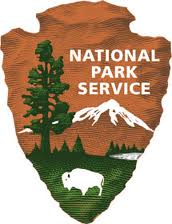
Washington, D.C. – The first round of competition in “Parks for the People: A Studio Competition to Re-imagine America’s National Parks” is complete. Teams from nine colleges and universities advanced from a field of 41 entries to design studio exercises and face a second jury review next summer.
National Park Service Director Jonathan B. Jarvis said, “The teams have presented their vision to the judges; now they must collaborate with the parks to find ways to promote sustainability, inspire stewardship, empower youth, and foster dynamic connections among parks, communities and natural systems.”
Interdisciplinary teams from 35 design schools, colleges and universities entered the fall semester competition, interest that Jarvis called impressive. “Judges were faced with a rich variety of approaches that encompass architecture, landscape architecture, urban design, planning, ecology, preservation, the fine arts, and exhibition and web design,” he said. “It will be interesting to see how the teams react when they apply vision to the landscape and the national park visitor experience.”
All schools pulled together interdisciplinary teams – some include more traditional architecture, landscape architecture, planning, history and ecology but some teams included exhibit design, cartography, poetry, story-telling and animation. Teams span undergraduate and graduate programs. They are diverse and bring a range of perspectives from the island of Manhattan to Manhattan, Kan.; from Washington state to Miami and from New Jersey to Texas.
“We’ve challenged the most ambitious design studios in America to show us the park of the 21st century,” said Olympia Kazi, executive director of the Van Alen Institute, which is the primary collaborator with the National Park Service for ‘Parks for the People.’ We’re urging these terrific teams to think boldly – through deeply-researched design – about how parks can respond to their communities at a time of cultural and ecological change. We look forward to visions that will help us sustain and celebrate these national treasures.”
“Parks for the People is a significant test for these teams,” said Ethan Carr, associate professor from the University of Massachusetts Department of Landscape Architecture and Regional Planning and a member of an independent advisory committee that judged the entries. “The national park system is at a significant point in its history as it adapts to changing social, environmental, and technological contexts.
The range of studios moving forward in this competition will explore ideas about how to respond to these changes – from climate change to a more diverse society to new forms of interpretive media – while ensuring continued stewardship of the parks themselves.”
The “Parks for the People” competition grew out of the 2008 Designing the Parks conference sponsored by the National Park Service, Van Alen Institute, The Cultural Landscape Foundation, Golden Gate National Parks Conservancy, The Institute at the Golden Gate, National Parks Conservation Association,
University of Virginia and the George Wright Society. The conference marked the start of a public-private partnership to promote the importance of well-designed public parks in contemporary society. The conference sponsors formed a partnership and produced six principles that future park planning and design must demonstrate: a reverence for place, engagement of all people, expansion beyond traditional boundaries, sustainability, informed decision-making, and an integrated research, planning, design and review process.
Van Alen and the National Park Service assembled the national design advisory committee to shape the competition and judge the entries. Team entries explore the designing the parks principles and address specific park projects, but may also investigate design and planning solutions that consider the way a modern visitor of any age, ethnicity, and ability relates to any national park and its story.
“Parks for the People” stage one winners are listed below. Additional detail about the winners is posted at www.designingtheparks.org
Biscayne National Park (Miami)
Florida International University College of Architecture + the Arts
Chattahoochee River National Recreation Area (Atlanta)
Cornell University College of Agriculture and Life Sciences
Civil War Defenses of Washington, D.C.
University of Pennsylvania School of Design
Hopewell Furnace National Historic Site (Elverson, Penn.)
Pratt Institute School of Art and Design
Rutgers University School of Environmental and Biological Sciences
Nicodemus National Historic Site (Nicodemus, Kan.)
The City College of New York’s Bernard and Anne Spitzer School of Architecture
Kansas State University College of Architecture, Planning, and Design
San Juan Island National Historical Park (Friday Harbor, Wash.)
University of Washington College of Built Environments
Valles Caldera National Preserve (Jemez Springs, N.M.)
Rice University School of Architecture

 Your Privacy Choices
Your Privacy Choices
 The
The